The acquisition of offshore in-situ energy is a key technology for the development of ocean informatization and the Internet of Things (IoT) in marine environments. Recently, the Blue Energy Team from the School of Physical Science and Technology at GXU has achieved a series of progresses in the efficient harvesting of low-frequency wave energy based on triboelectric nanogenerators (TENG). These research findings have been published on internationally renowned academic journals, including Advanced Energy Materials, Advanced Functional Materials, Advanced Science, and Nano Energy.
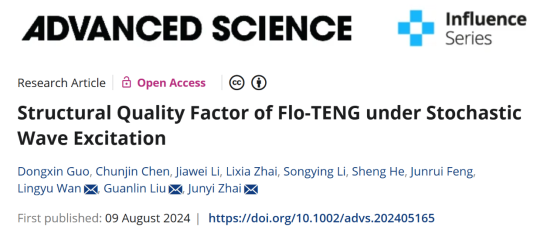
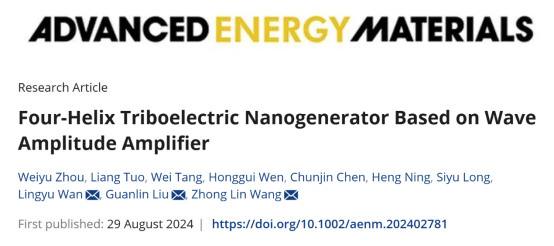
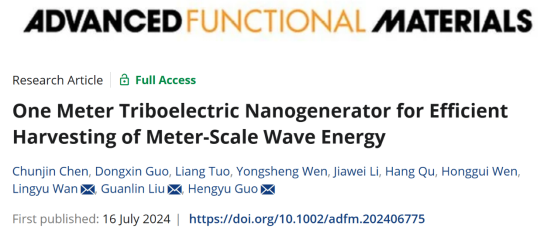
Understanding the dynamic laws of the interaction between waves and floating objects is the key to optimizing design for efficient collection of surface wave energy in seawater. The team introduced the theory of stochastic waves and spectral analysis based on the stochastic signal characteristics of ocean waves, and proposed for the first time the quantitative evaluation of the structural quality factor of the shell's ability to harvest wave energy from the perspectives of statistics and energy transfer. It also developed an evaluation method for the degree of wave-object coupling compatibility of TENG devices, providing fundamental guidance for the design of efficient harvesting wave energy with TENG devices and the selection of internal energy harvesting directions. The research finding has been published on internationally renowned journal Advanced Science (Advanced Science, 2024, 202405165), with Dongxin Guo, a 2021 master's student, as the first author, and Lingyu Wan, Guanlin Liu, and Junyi Zhai as corresponding authors.
Besides, the team discovered that large-sized floating objects are beneficial for the conversion of actual ocean wave energy. They designed and produced the industry's first one-meter sized wave energy triboelectric nanogenerator, achieving a single cycle charge transfer of 60.82 μC and a triboelectric layer surface area density of 1.76 cm?1. By integrating a segmented limiter device to control different sliders, they achieved effective contact-separation between multiple TENG units, resulting in high efficiency of energy harvesting, high sensitivity of wave responses, and excellent anti-overturning capabilities. These findings were published on internationally renowned journal Advanced Functional Materials (Advanced Functional Materials, 2024, 2406775), with Chunjin Chen, a 2021 master's student, as the first author, and Lingyu Wan, Guanlin Liu, and Hengyu Guo as corresponding authors.
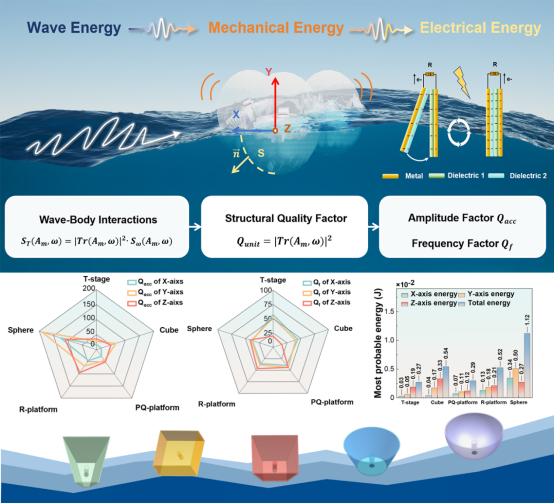
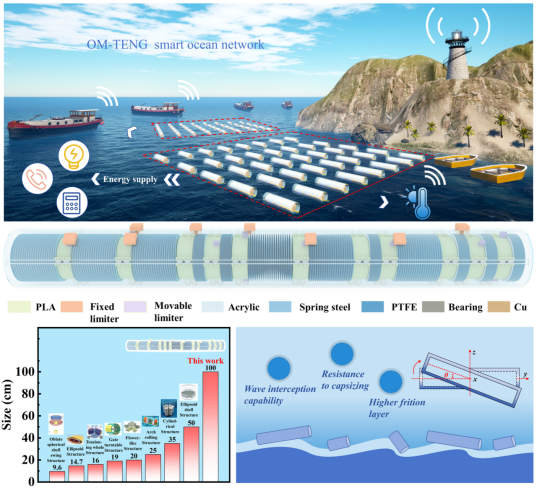
Based on multiple ocean field tests, the team discovered that under normal sea conditions, the actual wave amplitude is difficult to provide sufficient amplitude for the floating object TENG. In response, it proposed a surface wave amplitude amplifier and a lightweight four-helix structured TENG (FH-TENG). By utilizing the lever principle, this system converts the high-torque, low-amplitude motion of ocean waves into the low-torque, high-amplitude motion, resulting in a 60% increase of amplitude and a 235% enhancement of energy output. These research findings have been published on the internationally renowned journal Advanced Energy Materials (Advanced Energy Materials, 2024, DOI: 10.1002/aenm.202402781), with Weiyu Zhou, a 2022 master's student, as the first author, and Lingyu Wan, Guanlin Liu, and Zhonglin Wang as corresponding authors.
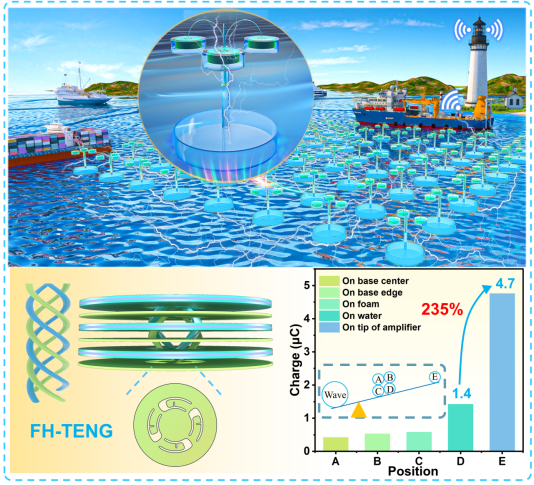
In the field of high-performance wave energy triboelectric nanogenerators, the team proposed a tension-integrity structured triboelectric nanogenerator (T-TENG), which enables the efficient contact separation of high-density stacked units and the acquisition of broadband omnidirectional wave energy. The related research findings have been published on the international journal Nano Energy (Nano Energy, 2023, 117, 108906), with Heng Ning, a 2021 master's student, as the first author, and Guanlin Liu as the corresponding author. In addition, the team designed a highly sensitive, modular shuttle hybrid nanogenerator (MSHG), which obtained real-time electrical output, accelerated amplitude characteristics, and most probable output frequency of MSHG in real marine environments. These findings provide important insights for advancing the application of nanogenerators in marine settings. The related findings have been published on Nano Energy (Nano Energy, 2024, 125, 109546), with Lixia Zhai, a 2021 master's student, as the first author, and Lingyu Wan, Huilu Yao, and Junyi Zhai as the corresponding authors.
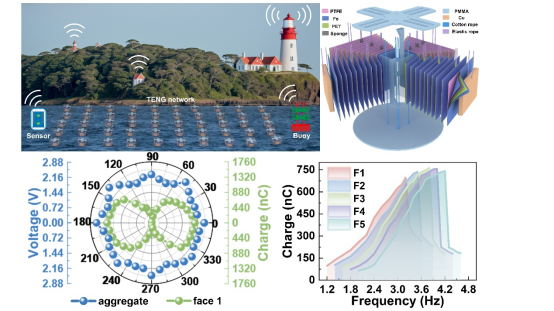
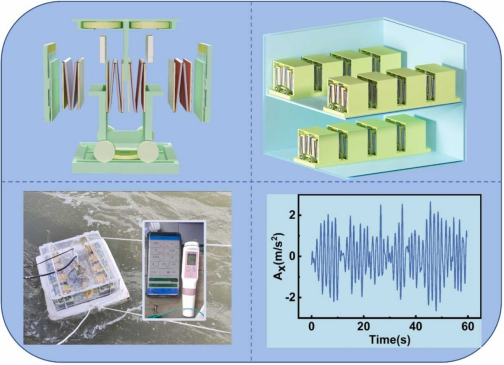
The Blue Energy Team from School of Physical Science and Technology at GXU, which is based on the jointly-built Nanoenergy Center by our university and the Beijing Institute of Nanoenergy and Systems, Chinese Academy of Sciences, has more than 30 members, including one academician and nine national-level young talents. It is one of the most influential research teams in China in the field of ocean energy with triboelectric nanogenerator. The team is committed to promoting the application of triboelectric nanogenerators (TENGs) in wave energy collection, especially for the development of blue energy in the Beibu Gulf and other coastal areas. It conducts systematic research work in the areas of ocean energy acquisition and conversion, distributed energy systems, and triboelectric materials and devices, and has achieved a number of breakthroughs of research findings.
 ???????????????????
>
Content
???????????????????
>
Content
 ???????????????????
>
Content
???????????????????
>
Content




